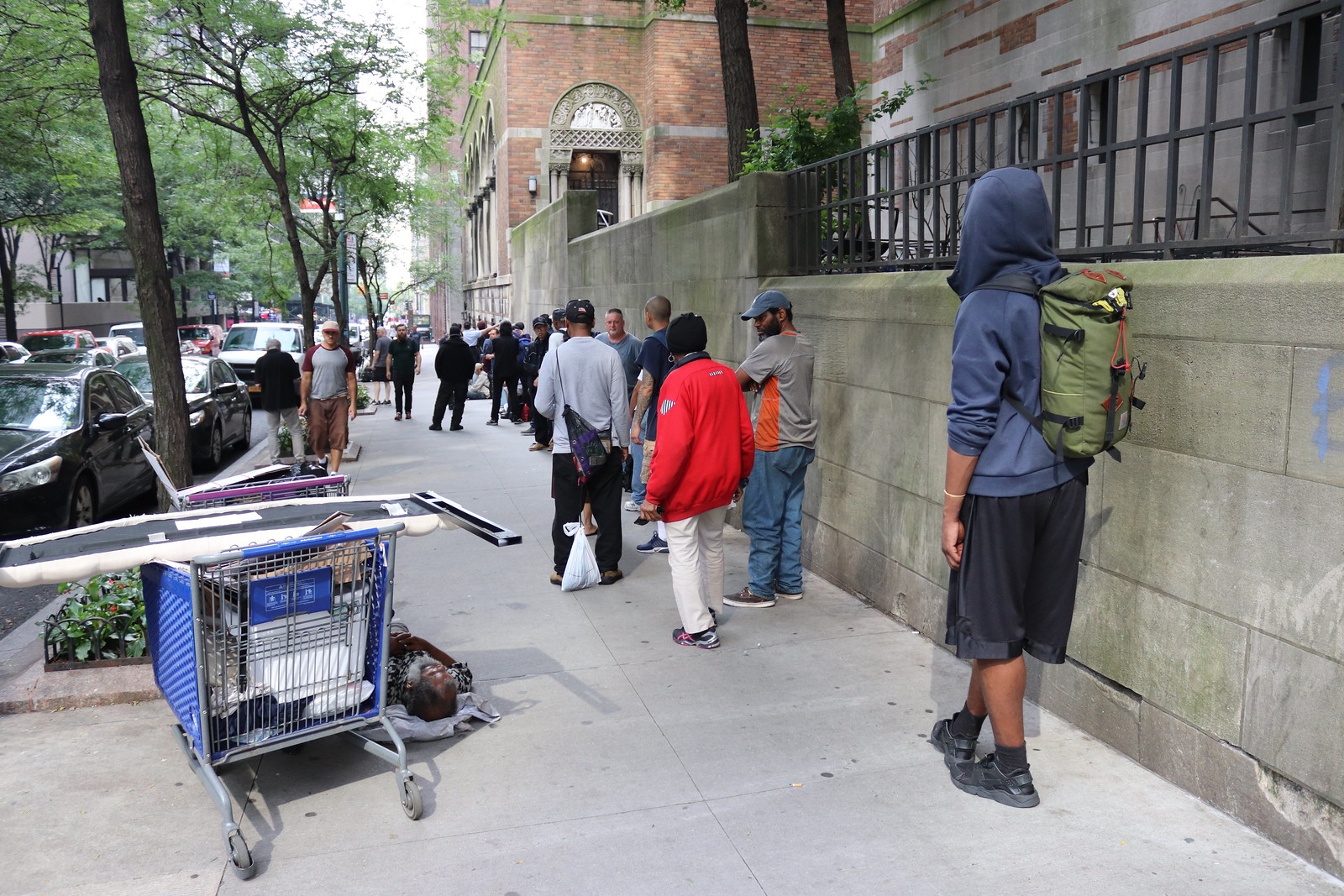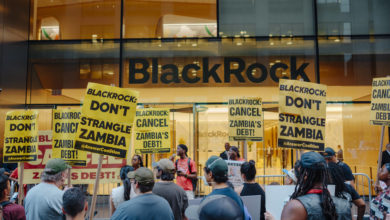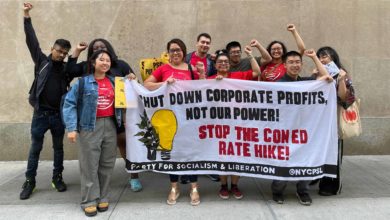
Homeless New Yorkers are the latest focus of the state’s response to the coronavirus crisis. Instead of providing desperately needed public housing programs, corporate politicians have sent police to use force against those sleeping in the subway because they have nowhere else to go.
The New York City Police Department announced they would be actively surveilling 100 stations for homeless people, claiming they would provide aid to house the homeless. Instead, they are arresting homeless people in the subway stations and homeless people dying in transit.
In addition, under the pretext of sanitizing trains, for the first time in its history the huge subway system here will close down every night from 1 am to 5 am. At midnight, police now wait at stations to begin forcing off anyone on the trains. On May 6, the first night of the shutdown, 2,000 homeless people were removed from trains. Some 90 percent then slept in the street or on buses. Only 10 percent went to shelters. Thousands of hotel rooms the city said it had ready for the homeless remained empty.
This follows incitement by New York State Governor Andrew Cuomo against the homeless. Last month, during a coronavirus briefing, he singled out this city’s most vulnerable for scorn, saying it was “disgusting” that they were sleeping in the subways, and blaming them for infection. This is not the first time the governor has scapegoated those without shelter. Throughout his career, Cuomo has blamed homeless people for problems that result from his budget cuts—from subway service delays to housing shortfalls, to poor sanitation.
Huge homeless numbers reveal deep housing crisis
This new crisis-within-a-crisis reveals the deep housing crisis created over decades by corporate-owned politicians and giant real estate developers.
Rents here are among the highest in the country. Since the start of the sheltering in place directive here in March, and the massive layoffs that accompanied it, renters across all five boroughs are experiencing heightened anxiety over their ability to pay rent which consumes a large percentage of their earnings. Small businesses are also suffering and fear having to shut down permanently. Meanwhile, homelessness is growing due to the pandemic.
Roughly one third of U.S. renters weren’t able to pay rent in April, and an estimated 40 percent of New York City renters weren’t able to pay rent on time in April.
Homeless shelters have gotten so overcrowded the city has resorted to renting out hotel rooms for the homeless. Though this initiative might sound commendable, it is stalled in bureaucracy. FEMA laid out plans for reimbursement for the hotel rooms, but City Council dragged its feet in passing the hotel shelter bill, leaving over 10,000 shelter residents waiting in the dark.
Cuomo’s anti-worker/anti-poor policies and budget cuts are at the heart of many of the crises New York City faces today, one of the biggest being housing insecurity. Here’s a quick rundown of budget cuts and policies that contributed to the city’s housing and homeless crises:
• Publicly funded housing, once a desirable form of affordable housing, is on the brink of crumbling after decades of disinvestment from all levels of the government. An estimated $32 billion is needed for repairs and maintenance. Tenants are forced to live with toxic mold in their apartments, and sometimes wait years for basic repairs like fixing leaks.
• In 2011, Cuomo cut $65 million of funding from Advantage, a rental assistance program that helps people in shelters find homes and receive jobs or training, thus leading to an additional cut of $27 million in federal funding. That same year, then-Mayor Michael Bloomberg terminated the Advantage program. This added over 16,000 new applicants into the shelter system in three years time.
• Also that year, Cuomo cut $200 million out of the Metropolitan Transit Authority budget. He later passed a cut to payroll taxes that would have directed $250 million to the MTA operating budget. Year after year, he has chipped away at the MTA’s operating budget. These cuts came at a time that the homeless population has grown annually, resulting in an increasing presence of homeless people sleeping on trains or in stations.
• In an effort to and combat fare evasion and the presence of homeless people in the MTA, Cuomo approved a budget of $17 billion to expand the underground police force by adding 500 new officers last year.
Use eminent domain to seize empty apartments
Why blame homeless people when you can better use your time to enact programs to expand truly affordable and inclusive housing?
For every homeless person in New York City, there sit three empty apartments. New York City should seize empty apartments and homes and convert them to permanent, affordable housing. These homes should be expanded to provide shelter for undocumented immigrants, victims of domestic abuse, and, anyone in need of housing.
Utilizing eminent domain, New York City once tore down entire neighborhoods in the Bronx to build the Cross Bronx Expressway. Eminent domain can certainly be used to seize empty buildings, empty units, or empty investment properties to provide something tangible for the actual needs of people.
The collision of the crises in New York City was inevitable and no solution under capitalism will do anything except to benefit the rich. Now more than ever do we need a socialist system to begin placing the needs of people first.






